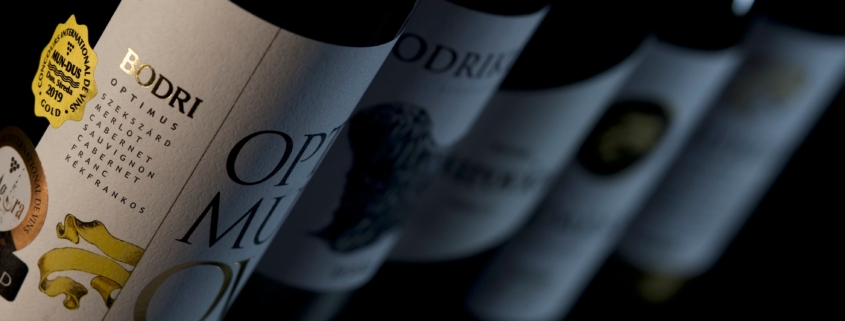How to navigate Hungarian wines like a pro
Kékfrankos, Chardonnay, Zweigelt, Merlot, Cabernet Franc, Bianca – Hungarian wines are diverse and steeped in history. This rich variety in local wine-making can make picking the right bottle confusing – even for wine connoisseurs. Here’s a crash course into Hungarian wines to help you navigate the wine list like a pro.
The history of wine-making in Hungary dates back to Roman times. Around the 12th-13th century, new grape varieties were introduced from Italy, Germany, and France. During the Ottoman rule, Tokaj and Sopron – the unoccupied Northern parts of Hungary – emerged as major wine-making hubs. Wine-making boomed under Austro-Hungarian rule, solidly putting Tokaj on the international map. Unfortunately, the industry got devastated by the 1882 phylloxera epidemic.
Under communist rule, quantity was prioritized over quality, which meant the introduction of practices such as overcropping and pasteurization. Following the collapse of communism in Hungary, the country started putting deliberate effort into returning to some of its older wine-making practices while adopting modern technologies and trends.
In 2022, Hungary was the 8th largest wine producer in Europe, with an output volume of 2.5 hectoliters. Over a third of the wine gets exported (37%), which still means that most of it gets consumed locally. Hungary ranks #17 in the world on the consumption of wine per capita, so to say “Hungarians love their wine” would be an understatement. In hot summer months, you cool down with a refreshing glass of fröccs (spritzer). Forralt bor (mulled wine) is as essential to Christmas festivities in Hungary as is apple pie to Independence Day in the US.
So here is what you need to know before your next visit to a winery or as you browse through dozens of bottles of locally produced wine in a supermarket.
Making sense of Hungarian wines
There are 22 wine-growing districts in Hungary. They are largely grouped into 5 (sometimes 7) main regions: 1. Tokaj, 2. Eger, 3. Badacsony (Nagy Somló and Lake Balaton), 4. Villány and Szekszárd, and 5. Sopron.
Now, most guides to Hungarian wines go into intricate details of the soil conditions, wine-making traditions, and grape varieties of each region. However, unless you’re willing to spend a few days trying to memorize the details of a highly complex system, these guides don’t make things easier when trying to pick a bottle on the spot. That’s why we thought we’d simplify things and tell you what to look for based on your general wine preference.
223 varieties of grapes are cultivated in Hungary. We will focus on some of the most common varieties to get you started on your Hungarian wine journey.
White wines
If you prefer sweet wine wines, look for:
- Aszú wine from Tokaj is a noble rot wine. This means the sweetness of the wine comes primarily from the method of decaying wine grapes as opposed to added sugars or syrups.
- Juhfark-blended wines from Nagy Somló are for those who do not want a full sweet wine experience yet are not sold on dry wines either. Juhfark-blended wines are made from an ancient grape variety that was revived in the 1990s. Notes of citrus fruit, herbs, and mint create a perfect balance between freshness and complexity.
- Furmint wine from Tokaj is the third most planted variety in Hungary. Its popularity is due to the variety potential of the grape, used to produce both sweet dessert wines and wonderfully dry wines.
- Bianca-blended wines from the Kunság wine district are fresh, aromatic, off-dry wines. Along with Balaton’s Olaszrizling wines, they are commonly used to mix a fröccs drink on a hot summer day.
For dry white wine lovers, here are a few options:
- Furmint wine from Tokaj is more on the acidic side of the spectrum with notable flavors of apples and wet tree bark.
- Csillag wine from Eger has more fruity, fresh, and floral notes, perfect for warm summer days.
- Chardonnay wines from Neszmély, Etyek-Buda, and Balatonboglár are medium-acidity wines with notes of green apple and lime. Due to the grape variety’s ability to take on the unique characteristics of its terroir, you will be pleasantly delighted by the versatility of this wine depending on its origin.
- Hárslevelű-blended wines from Tokaj, Eger, and Villány add a silky texture and linden blossom notes to a wide range of wines, from sweet dessert to light dry.
Red wines
If you prefer sweet red wines:
- Zweigelt wines from Sopron, Eger, and Bükk are great for sweet wine lovers who want to venture out into the dry wines without fully committing. With flavors of pomegranate and sour cherries, this light wine pairs seamlessly with a large variety of foods year-round.
Fancy a glass of dry red wine? Here you go:
- Cabernet Franc, Cabernet Sauvignon, and Merlot from Villány are for Bordeaux blend lovers. British wine critic Michael Broadbent once said, “Cabernet Franc has found its new home in Villány.”
- Bikavér wine from Eger (translated as Bull’s Blood) is a blended red wine with a more complex, rich flavor.
- Kékfrankos (also known as Blaufränkisch) from Villány is a medium-bodied red wine with flavors of sour cherry and other red fruits. It’s fresh and crisp but has great aging potential.
Whether you are ordering a glass of wine on a terrace at Balaton this summer or picking out a bottle to bring to a barbecue, we hope this quick guide will give you more confidence as you navigate the long list of options.


